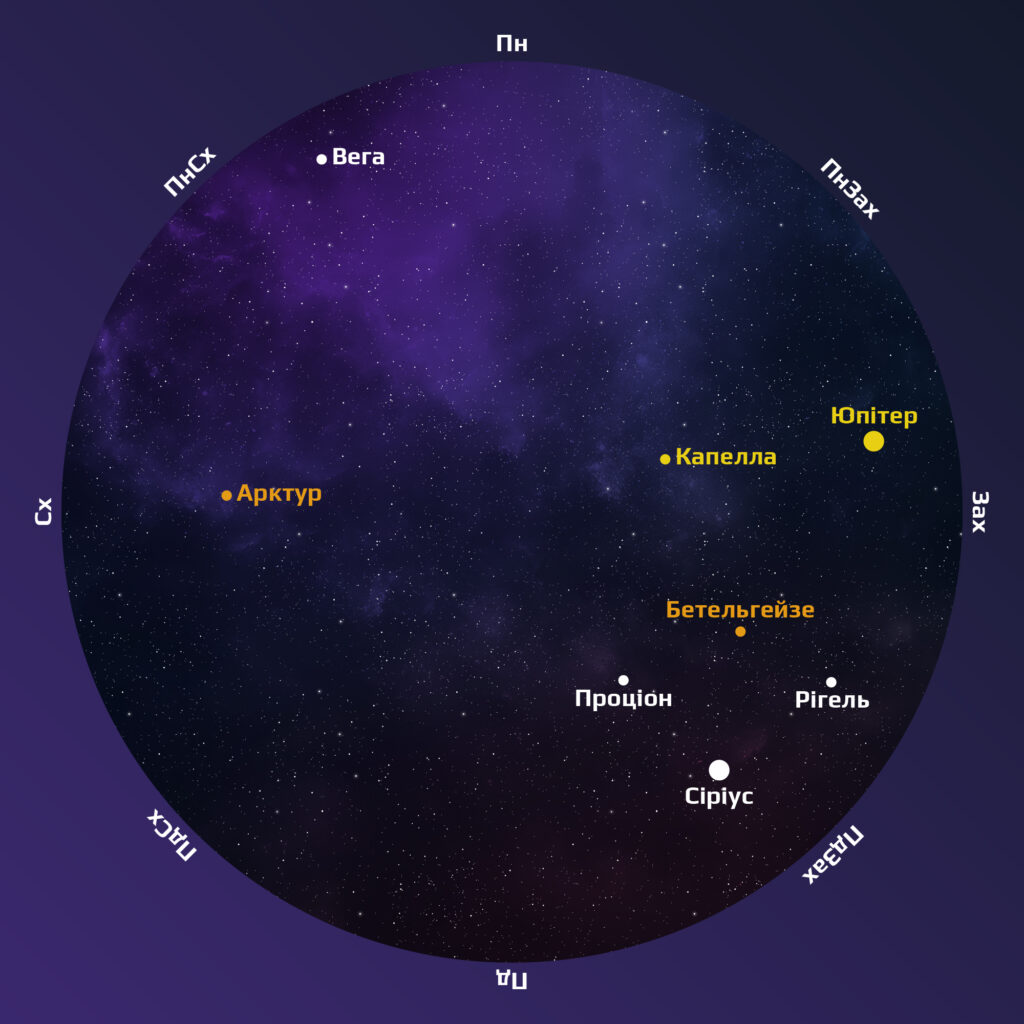We are used to calling remarkable celestial bodies or prominent personalities “first magnitude stars”, without thinking that in astronomy this concept is subject to clear measurement. Moreover, ten stars have a visual magnitude of less than 0.5ᵐ, and four of them — Sirius, Canopus, Toliman, and Arcturus — have a visual magnitude of negative numbers (the Sun has a value of -26.8ᵐ). Seven of these “top ten” can be observed from the territory of Ukraine, and in the first half of April, the time comes when they can all be seen simultaneously above the horizon in the evening.
In fact, the first “star” to appear in the sky shortly after sunset will be the largest planet in the Solar System — bright Jupiter, which will be easy to find almost exactly in the west at about 20° above the horizon. By 9pm (when nautical twilight ends in Kyiv), it will have dropped significantly. You can start looking for the objects of the aforementioned “seven” based on it. To the left of Jupiter, at approximately the same height but to the southeast, the blue Rigel, the brightest star in the Orion constellation, will shine, contrary to astronomical tradition, marked with the Greek letter β. Moving upwards from it, we find the red giant Betelgeuse (α Orion), and even further south (again to the left), Sirius, the brightest star in our list. The last two objects are part of the so-called Winter Triangle.

The brightest star-like objects in the twilight sky in the first half of April 2024 (for the latitude of Kyiv at the end of the evening nautical twilight)
Almost vertically upwards from Jupiter, “halfway” to the zenith, we will find the bright yellowish Capella (α Auriga). Similarly, moving upwards from Sirius, we will come across the third peak of the Winter Triangle — Procyon (α of the Canis Minor). Now let’s turn our gaze to the east and at 20-25° above the horizon we will see the orange Arcturus (α Boötes, the brightest “fixed star” in the northern hemisphere of the celestial sphere. Finally, to the right of the direction to the north (which can be determined by the compass or the North Star), we will see the white Vega low above the horizon, which already belongs to the “typically summer” constellation Lyra.
You can see all seven stars at the same time only if the horizon is open and the sky is completely cloudless. In mid-April, the best time to observe in Kyiv is around 21:15 local summer time, in eastern Ukraine — half an hour earlier, in Lviv and Odesa — 20-25 minutes later. Over the next few days, Rigel will appear lower and lower above the horizon in the evenings, and on 23 April, it will set at the end of the nautical twilight. At the end of the month, Sirius and Jupiter will also disappear from the night sky. So don’t miss the opportunity to admire the interesting star configuration and show it to your friends!
Earlier we wrote about what else you can see in the sky in April 2024.

